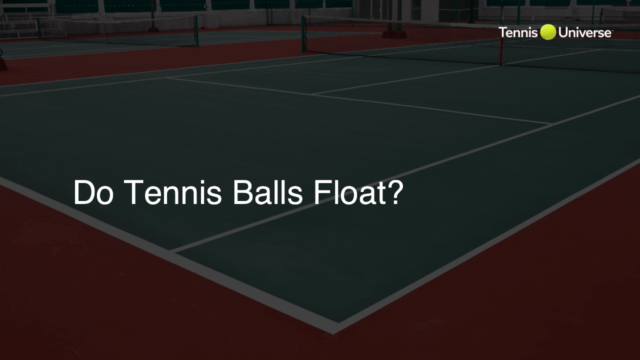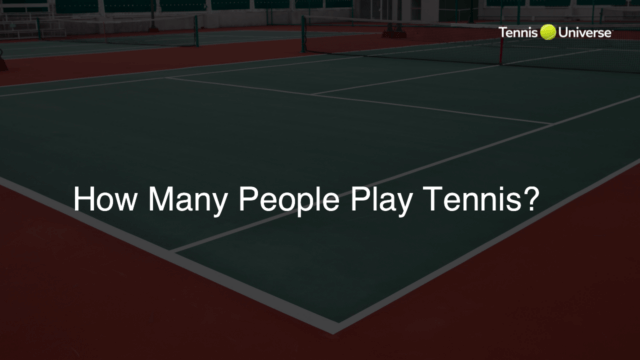The height of a tennis net is 3 feet (0.91 meters) at the center, gradually rising to 3.5 feet (1.07 meters) at the sides, where it connects with the net posts.
Understanding Tennis Net Height
When setting up a tennis court or learning about the game, it’s important to comprehend the height of a tennis net. The height of a tennis net plays a crucial role in the dynamics of the game and affects how players strategize and make use of their tennis racket.
Tennis Net Height Measurements
The tennis net height is not consistent across its length and varies from the center to the sides. Here’s what you need to know:
Center Height
At the center of the net, the height is 3 feet (0.91 meters). This creates a distinct playing field for lower shots and drop shots while using your tennis racket.
Side Height
As you move towards the sides of the net, the height gradually increases, reaching 3.5 feet (1.07 meters) when connected to the net posts. This difference in height encourages players to hit shots crosscourt or attempt a lob over their opponent.
Regulation Net Dimensions
Apart from the height, it is also necessary to understand the standard dimensions of a tennis net. The ITF (International Tennis Federation) specifies that the net should be supported by posts that are 6 feet (1.83 meters) high and should be placed 3 feet (0.91 meters) outside each sideline. Consequently, the total width of the net is 42 feet (12.8 meters).
Importance of Knowing Tennis Net Height
Being aware of the tennis net height helps a player develop effective strategies to score points and improve their skills. With several tennis tips incorporating net height information, players will gain a better understanding of how to control their shots and surprise their opponents.
Tennis Court Surfaces and Net Height
Tennis courts come in various surfaces, such as grass, clay, and hard courts. While the tennis net height itself remains constant across the different surfaces, it’s important to note that the ball’s bounce and speed vary. The surface can significantly impact the effectiveness of shots played around the net. Knowing how the ball behaves on each surface will help you make better use of tennis tips while applying your net height knowledge during matches.
How to Adjust Your Playing Style
Understanding the tennis net height allows you to adapt your playing style based on the situation. For example, if you are playing against a net-rusher, take advantage of the lower center net height by executing well-placed drop shots or passing shots. Alternatively, if you find yourself frequently at the net, remember to move towards the center where the net height is lower, thus minimizing your opponent’s chances of getting the ball past you.
Tennis Tips for Net Play
When incorporating the tennis net height into your game, consider these tennis tips for more effective net play:
- Place volleys deep into your opponent’s court – this gives you more time to recover and reduces their passing angles.
- Divide the net into zones and aim your volleys to the middle or far zones for increased offensive pressure.
- When approaching the net, avoid running parallel to the net – move at an angle to increase your chances of a successful volley.
- Keep your eye on the ball and maintain a low body stance at the net to help with your reaction time.
By understanding and utilizing the tennis net height, you’ll be better equipped to develop your game strategy and take advantage of various tennis tips to improve your overall performance on the court.
FAQ Section
Here are some frequently asked questions related to tennis net height and the information provided in this blog post. These questions and answers should address the common doubts that may arise from the topic and help you gain a better understanding of the subject.
What material is used for making tennis nets?
Tennis nets are typically made from braided or twisted polyethylene, polypropylene, or polyester materials. These materials offer durability, weather resistance, and good tension properties.
How is a tennis net held up and tensioned?
Tennis nets are held up by net posts placed on each side of the court. A center strap is attached to the middle of the net, which is then anchored to the ground to maintain the correct height and tension. The net is further tensioned using a winding mechanism or an external tensioner on the net posts.
Do doubles and singles courts have different net heights?
No, the net height remains the same regardless of whether you’re playing singles or doubles tennis. However, the court width is different – doubles courts are wider than singles courts, but the net height stays consistent across both variants.
How is net height affected in wheelchair tennis?
For wheelchair tennis, the net height remains the same as in standard tennis, with a height of 3 feet (0.91 meters) at the center and 3.5 feet (1.07 meters) at the sides. Wheelchair tennis follows the same rules as standard tennis, with the exception of an allowance for two bounces before returning the ball.
Are there any differences in net height for children’s tennis?
Yes, for children’s tennis or mini tennis, the net height is usually adjusted to be lower than the standard net height to accommodate their stature and skill level. Smaller courts and lighter equipment are also used to make the game more accessible and enjoyable for beginners and young players.












